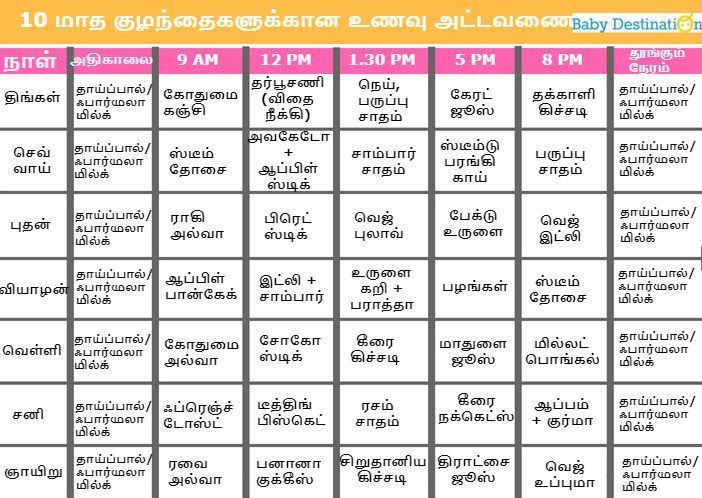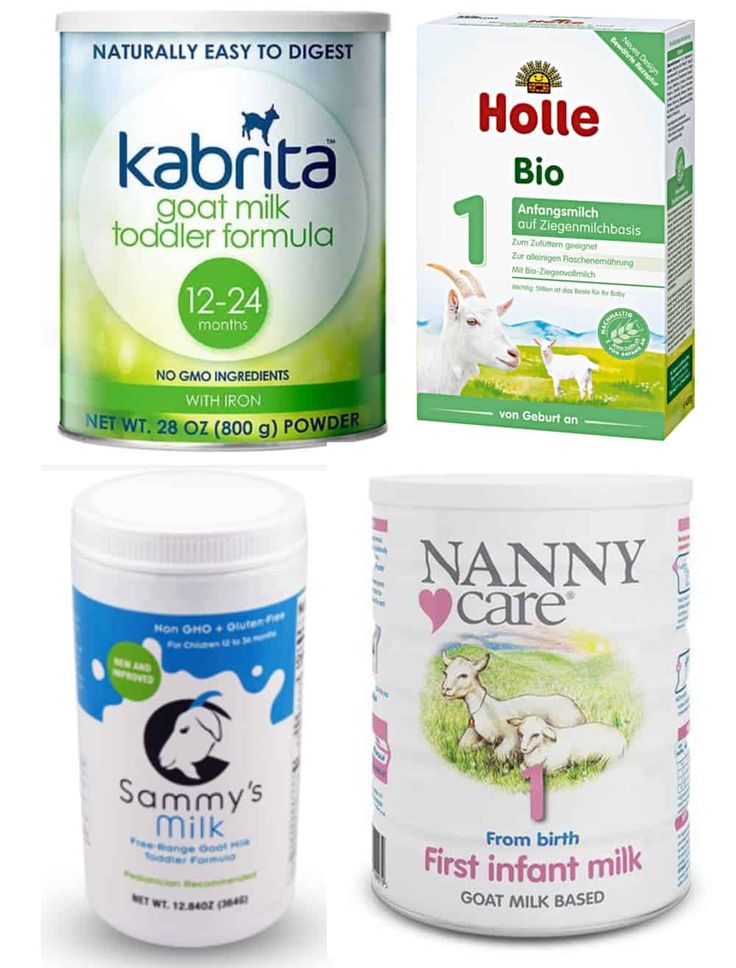Kiwi fruit for baby food
Easy 5-Minute Kiwi Puree for Babies and Toddlers
byAmy Palanjian
Updated
This post may contain affiliate links. If you shop from one of our links, we may earn a commission.
Transform fresh kiwi into a simple Kiwi Puree for babies and toddlers. This easy baby food recipe is full of Vitamin C and fiber and is easy to freeze!
Kiwi Puree
I love blending up fresh fruit into homemade baby food purees and this one is a great option to introduce kiwi to babies. We love this as is, or mixed with Mango Puree or Banana Puree.
How to Buy Kiwi
You’ll want to choose kiwi that’s slightly soft to the touch, but isn’t too squishy. That should have the best flavor and texture for making this recipe.
TIP: Find more tips on how to cut kiwi for baby led weaning and kids.
Ingredients You Need
To make this recipe, you just need fresh kiwi. You may need a little liquid, such as water, breastmilk, or formula, depending on the moisture in the fruit.
TIP: You can also try using full-fat coconut milk to add nutrients and flavor to this puree.
Step-by-Step Instructions
Here’s a look at this super simple baby food recipe. Scroll down for the full recipe.
- Peel the brown skin from the kiwi and discard..
- Add the fruit to a blender.
- Blend until very smooth, adding a little liquid if needed.
- Serve or store in the fridge or freezer for later.
TIP: If the fruit has a hard time blending smooth, you can double the amount to make it easier for the blender to work.
How to Freeze Kiwi Puree
To freeze, portion puree into an ice cube tray and freeze for 4-6 hours or until frozen. Transfer to a freezer storage bag for up to 3 months. To thaw from frozen, place a cube into an airtight container and allow to thaw overnight in the fridge. Freezing some of your batch is a great way to keep it fresh and have easy meals or meal components ready and waiting.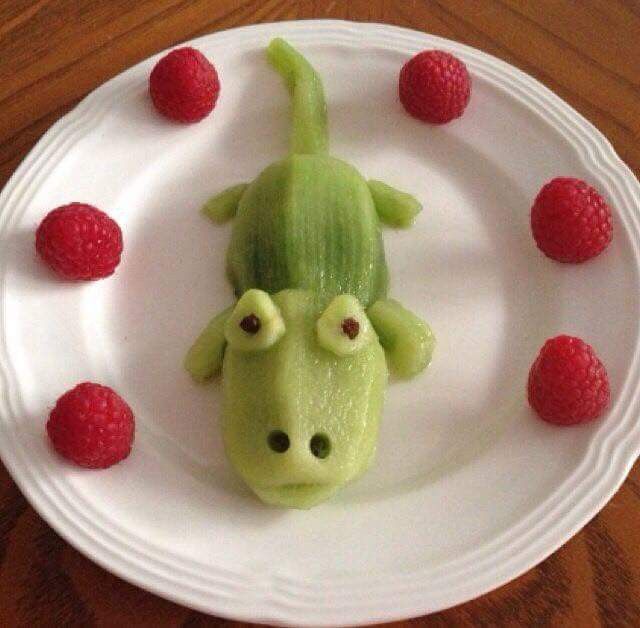
TIP: Find my best tips for baby food storage here.
My Kiwi Puree is tart—what should I do?
Depending on the flavor of the fresh fruit, it may taste a little tart when pureed. If tastes too tart to you, you can mix it with plain whole milk yogurt, applesauce, Banana Puree, or Avocado Puree to mellow the flavor.
Stage 2 Baby Food Recipe
Kiwi can be a little acidic, so offer this to a baby once they’ve eaten other solids around 7 or 8 months. Sometimes acidic foods can cause a minor skin reaction in babies.
Tips for Making the Best Kiwi Puree
- If the blender has a hard time blending the fruit totally smooth, increase the amount of kiwi to 2 cups.
- To freeze, portion puree into an ice cube tray and freeze for 4-6 hours or until frozen. Transfer to a freezer storage bag for up to 3 months.
- To thaw from frozen, place a cube into an airtight container and allow to thaw overnight in the fridge.
- Serve as is or mix into yogurt, oatmeal, or a smoothie.

- Mix it with another puree as desired, such as applesauce, Banana Puree, or Mango Puree.
- See more of my favorite baby food combinations here.
- Learn how to cut kiwi for babies and kids.
I’d love to hear what you think of this recipe, so please comment below to share feedback!
Prep Time 5 minutes
Cook Time 0 minutes
Total Time 5 minutes
Author Amy Palanjian
Cuisine American
Course Baby Food
Calories 28kcal
Servings 4
- ▢ 2-3 fresh kiwi fruit
- ▢ water, formula, breastmilk, or full-fat coconut milk as needed
Peel the brown skin from the kiwi and discard, keeping just the green fruit.
Add the fruit to a blender.
Blend until very smooth, adding a little liquid if needed.
Serve or store in the fridge or freezer for later.
Vitamix Blender
Storage Containers
Reusable Pouch
- If the blender has a hard time blending the fruit totally smooth, increase the amount of kiwi to 2 cups.

- To freeze, portion puree into an ice cube tray and freeze for 4-6 hours or until frozen. Transfer to a freezer storage bag for up to 3 months.
- To thaw from frozen, place a cube into an airtight container and allow to thaw overnight in the fridge.
- Serve as is or mix into yogurt, oatmeal, or a smoothie.
- Mix it with another puree as desired, such as Apple Puree, Banana Puree, or Mango Puree.
Calories: 28kcal, Carbohydrates: 7g, Protein: 1g, Fat: 1g, Saturated Fat: 1g, Polyunsaturated Fat: 1g, Monounsaturated Fat: 1g, Sodium: 1mg, Potassium: 142mg, Fiber: 1g, Sugar: 4g, Vitamin A: 40IU, Vitamin C: 42mg, Calcium: 15mg, Iron: 1mg
Tried this recipe?Rate in the comments and tag @yummytoddlerfood on IG!
Related Posts
Related Products
Dinnertime SOS
Buy Now
Happy Family Meals (Meal Plans)
Buy Now
Happy Family Meals (Vol 2)
Buy Now
Yummy Toddler Snacks
Buy Now
Share it with the world
FacebookTweetPinFiled Under
When Can Baby Eat Kiwi? Learn About Kiwi for Baby Food Recipes, Feeding Your Baby Kiwi Baby Food and the Age for Introducing Kiwi and Kiwi Baby Foods
Kiwi for Baby Food – Learn About Feeding Your Baby Kiwi and the Age to Introduce Kiwi
Introducing kiwi to baby between 8-10 months old (some say as early as 6 months). Kiwi fruits are very nutritious for your little one but they are acidic. This acidity makes Kiwi a bit difficult to serve to babies under 8 months of age.
Kiwi fruits are very nutritious for your little one but they are acidic. This acidity makes Kiwi a bit difficult to serve to babies under 8 months of age.
The Goodness of Kiwi for Baby
The Chinese Gooseberry (kiwi) is said to have been brought to New Zealand by missionaries returning from China in the early 1800’s. The kiwi did not make it over to America until the 1960’s. The Chinese Gooseberry was renamed “kiwifruit” after the kiwi birds that are native to New Zealand.
The Kiwi fruit (chinese gooseberry) is rich in Vitamin A, Vitamin C, fiber, potassium and even folate. Kiwi is not a high allergy risk however it is acidic. The acidity of the fruit may prompt mouth rashes and possibly rashes on the bottom.
Kiwi is a very good source of dietary fiber and loaded with antioxidants.
| Nutrients in 1 Medium Sized Kiwi Fruit | |
VITAMINS:Vitamin A – 66 IUVitamin C – 70. 5 mgVitamin B1 (thiamine) – .02 mg 5 mgVitamin B1 (thiamine) – .02 mg Vitamin B2 (riboflavin) – .02 mg Niacin – .26 mg Folate – 19 mcg Contains some other vitamins in small amounts. | MINERALS:Potassium – 237 mgPhosphorus – 26 mgMagnesium – 13 mg Calcium – 26 mg Sodium – 2 mg Iron – .24 mg Also contains small amounts of manganese, copper and zinc. |
When can I introduce Kiwi to my baby?
If your baby has shown any food sensitivities such as tummy troubles or the tendency to get diaper rashes, you may want to hold off serving kiwi until she is between 10-12 months old. As mentioned, kiwi is not a highly allergenic fruit so there should be no concerns about a true allergy to this fruit. Try serving kiwi cut into small dices or mashed between 8 to 10 months old.
Do the little Kiwi Seeds Need to be Removed?
You should not have to remove the seeds when offering your baby kiwi. The seeds are very tiny and should not pose a choking hazard. Use your own judgement based on baby’s ability to tolerate textures.
Use your own judgement based on baby’s ability to tolerate textures.
How to select and store Kiwi for yummy baby and finger food recipes
Hooray! According to the EWG, kiwi is not one of the “dirty dozen” foods that are most highly contaminated with pesticides – purchasing organic kiwi is a personal choice.
When selecting any type of kiwi, be sure the skin is not bruised and no visible indentations are present. You want a kiwi that is a bit firm as the squisher-softer ones may be just about to go bad. If you just cant wait for kiwi to ripen, place it in a paper bag with an apple or a banana on the counter and it will be ready to eat in 2 days.
Store kiwi for up to 3-4 weeks in the fridge and for about 1 week on the counter. Kiwi is really a non-demanding fruit!
Kiwi Recipes for Baby Food
Kiwi “Puree”
Peel kiwi and blend or puree as needed.
Kiwi Salad
Ingredients:
- 1 peeled and diced kiwi
- 1/2 peeled banana – diced
- 1 peeled and diced pear
Directions:
Step 1: Toss it all in a bag with your favorite coating (crushed cereal, wheat germ for example) and serve in a bowl. This is a really slippery, finger food so coating the dices with crushed cereals or wheat germ really makes for easier pick-up.
This is a really slippery, finger food so coating the dices with crushed cereals or wheat germ really makes for easier pick-up.
You can also give the “salad” a whiz in a blender/food processor to make a fruit puree – add yogurt and make a tasty smoothie!
Baby’s Yummy Kiwi Chicken
Ingredients:
- 2 chicken breast halves, boned and skinned
- pinch salt (optional)
- pinch freshly ground pepper
- pinch thyme, crushed
- 1 tablespoon butter or margarine (we prefer olive oil.)
- 2 tablespoons white wine (use either water or white grape juice when making for small children)
- 1 kiwi, peeled and sliced
Directions:
Step 1: Pound chicken to flatten to about ¼ inch; sprinkle with salt, pepper and thyme.
Step 2: Heat butter or oil in skillet. Sauté chicken on medium-high about 4 minutes or until cooked and tender; turn once halfway through cooking time. Remove to warm platter and keep warm.
Remove to warm platter and keep warm.
Step 3: Add wine (or water or juice for small children) to skillet; cook and stir 2 minutes.
Step 4: Add kiwi fruit; cook and stir gently 30 seconds longer.
Step 5: Serve with brown rice – chop or puree as needed for your baby’s preferred taste/textures.
Green Monster
Ingredients:
- 2 ripe kiwis
- 1 ripe avocado
- 1/2 cup cubed mango
Directions:
Step 1: Peel kiwi and slice
Step 2: Peel and pit the avocado
Step 3: Combine all ingredients and whizz in a blender.
You can also mash this up and offer as finger food, adding yogurt or even applesauce – caution, very messy.
Foods Good to Mix With Kiwi
- Apples
- Avocado
- Blueberries
- Peaches
- Pears
- Chicken
Poop Caution! If your baby is eating kiwi, there is no need to remove the little seeds. Be aware that the seeds will pass through and you may see them again in baby’s diaper!
Be aware that the seeds will pass through and you may see them again in baby’s diaper!
Remember, always consult with your pediatrician regarding introducing solid foods to your baby and specifically discuss any foods that may pose allergy risks for your baby.
This site complies with the HONcode standard for trustworthy health information:
verify here.
ORAL ALLERGY SYNDROME |
|---|
| The food on this page may be one involving OAS. OAS occurs when a person sensitive/allergic to pollen develops a reaction to fruits/veggies that have a similar type of pollen. Itching & swelling of the lips, the mouth and/or throat are typical symptoms. These symptoms normally appear within minutes of eating the offending food and may be worse during the spring and fall pollen seasons. Rarely is an OAS life threatening. Click below to learn more. |
| Birch Pollen Allergies |
Birch pollen allergies are associated with apple, carrot, cherry, pear, peach, plum, fennel, walnut, potato, spinach, buckwheat, peanut, honey, celery, and kiwifruit. |
| Cedar Allergies |
| Japanese cedar allergies are associated with melon, apple, peach and kiwifruit. |
| Mugwort Allergies |
| Mugwort allergies are associated with celery, carrot, spices, melon, watermelon, apple, hazelnut, and chestnut. |
| Grass Pollen |
| Grass pollen allergies are associated with melon, tomato, watermelon, orange, rice and cherry. |
| Ragweed Pollen |
| Ragweed allergies are associated with melon, chamomile, honey, banana, and sunflower seeds. |
| Latex |
| Latex allergies may be cross-reactive to banana, avocado, kiwi and papaya. |
SHARE ON FACEBOOK SHARE ON PINTEREST
90,000 from what age can children (benefit and harm)?Child’s birthday » Baby food » Age restrictions on the use of kiwi for children
06/24/2016
Contents tasty fruit
When a newborn child appears in the house, the parents have much more trouble and responsibilities.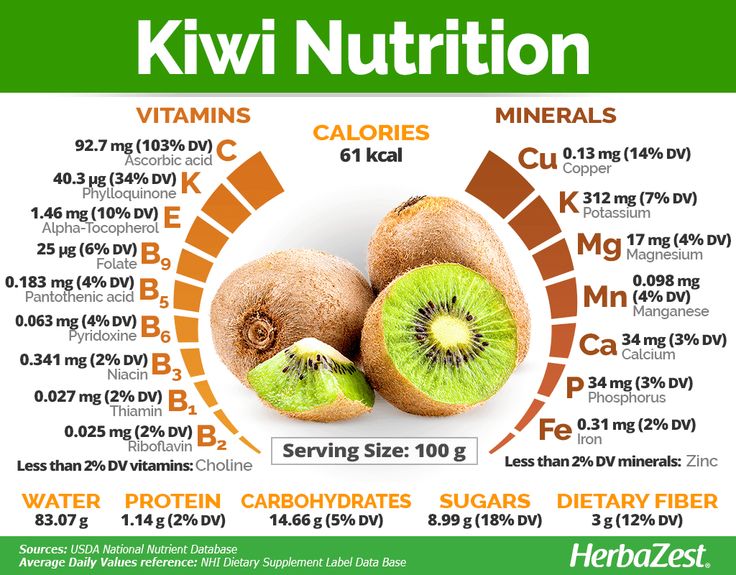 Along with this, there is a desire to feed the baby in the early months with maximum benefit for the body. You can replenish the supply of vitamins with the help of vegetables and fruits. But not all adults know when and from what age to introduce additional products into the menu, from how many months you can feed your baby with vegetables, which properties of fruits will be harmful, and which ones will be beneficial.
Along with this, there is a desire to feed the baby in the early months with maximum benefit for the body. You can replenish the supply of vitamins with the help of vegetables and fruits. But not all adults know when and from what age to introduce additional products into the menu, from how many months you can feed your baby with vegetables, which properties of fruits will be harmful, and which ones will be beneficial.
Many mothers and fathers try to start giving their offspring kiwi fruit as early as possible. This plant is native to China and has been bred in New Zealand to form the kiwi fruit known today. Useful properties of the plant are undeniable:
- high content of potassium, vitamin C and B; Nutritional value of kiwi
- the presence of vitamins A, D, E, nicotinic acid, calcium, magnesium, sodium, magnesium, phosphorus, zinc in the composition of kiwi;
- low calorie and active fat burning;
- reducing the risk of developing cancer;
- improvement of the cardiovascular system;
- strengthening the protective and regenerative abilities of the body;
- regulation of metabolic processes.

As a prophylactic, kiwi prevents rheumatic diseases and urolithiasis, and improves the functioning of the respiratory system. In babies who receive the required amount of fruit, the body is more resistant to viral and infectious diseases, there are less problems with the functioning of the heart muscle, problems with bowel movements disappear, and hematomas are less likely to form with bruises. And if the child suffers from diabetes, then kiwi will brighten up the boring diet of the patient.
Acceptable age for eating exotic fruit
Interesting facts about kiwiLet's start with the fact that pediatricians forbid giving kiwi to small children under five years old. From this age, it is allowed to eat one fruit per week.
But caring mothers can't wait to buy an exotic treat for their child from an early age, the benefits of which are very obvious.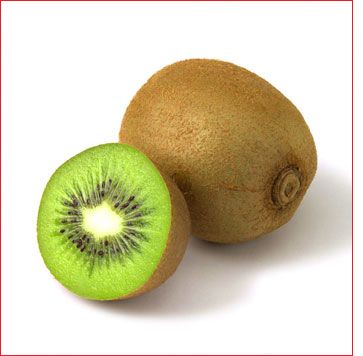 Then they introduce kiwi into the daily diet of children much earlier. From the third year, ½ fetus is allowed 1 time per week.
Then they introduce kiwi into the daily diet of children much earlier. From the third year, ½ fetus is allowed 1 time per week.
If parents decide to give an interesting fruit to a child of the first year of life, then you should remember that up to six months the use of kiwi is strictly prohibited! But from six months to one year, kiwifruit can be given to an infant 1 teaspoon in the form of juice or puree, again - no more than once a week.
Calorie content of kiwi in 100gA seven-month-old child can already take 2 teaspoons of overseas berries, and from nine to eleven months, children who start getting kiwi early are given ¼ share per week. Thus, in a year the baby is ready to eat fruit in the amount allowed for a three-year-old child.
It should be remembered that the introduction of a new fruit into the menu of young children should be gradual, carefully observing skin reactions and the functioning of the digestive system. Any unusual abnormal manifestations will indicate the development of an allergy. In such cases, it is necessary to stop giving the product to the child, otherwise the expected benefit will turn into an obvious harm to health.
In such cases, it is necessary to stop giving the product to the child, otherwise the expected benefit will turn into an obvious harm to health.
Contraindications and negative effects
The benefits of vitamin CIt is important to remember that an exotic fruit not only has beneficial properties, but can also be harmful to the body.
- The high content of vitamin C makes it impossible for children who are allergic to citrus fruits to take kiwi.
- Risk of developing hypervitaminosis due to frequent fruit consumption.
- The fruit is rich in various acids, so excessive consumption can cause irritation of the oral mucosa. Feeding kiwifruit to children with hyperacid gastritis is also excluded.
- Absolute contraindications for children of any age: disorders of the gastrointestinal tract, frequent diarrhea, allergic reactions.
At what age and at what age to start giving kiwi fruit to children, it is up to each parent to decide. It doesn’t matter if the baby is 11 months old or 3 years old, you should carefully weigh the pros and cons and only then decide whether the fruit will be useful or harm the child.
It doesn’t matter if the baby is 11 months old or 3 years old, you should carefully weigh the pros and cons and only then decide whether the fruit will be useful or harm the child.
Choosing and storing ripe and tasty fruit
It is very important to be able to choose ripe natural fruits and subsequently store the fruits correctly. Especially if the purchase is intended for a six-month-old baby or children of the first years of life.
Do not buy fruits that have spots, cuts or rot.So, the fruit should be moderately soft, so that you can slightly push the structure with light pressure. Too hard or too soft fruit indicates violations of the rules of cultivation or collection. You can't give it to children. The benefits of such a kiwi will be minimal, or even there will be no positive actions at all.
The aroma emanating from the fruit should not be too tart or harsh. A spoiled fruit is considered when a "wine" smell is felt. It speaks of fermentation. So kiwi can be poisoned.
An important factor in the choice of fruit is hard hairs that easily peel off from the surface. By the way, about the surface. The presence of spots, cracks, weeping and other violations of the integrity of the fruit is not allowed.
Kiwifruit should be stored in refrigerators at positive temperaturesKiwifruit can be stored for one and a half months in the refrigerator, but at a temperature not lower than 0º. But if an unripe fruit is purchased, then it should be in room conditions. Over time, it will ripen and will not only be useful, but also tasty.
Be that as it may, it is more expedient to wait until the age at which it is officially allowed to eat kiwi, and already without fear for the health of the child, feed the baby sweet and sour fruit. The benefits and positive properties of the fetus are obvious, but when there is a risk of adverse reactions, it is better to wait a year or two.
Start giving fruit to children from as many months as the local pediatrician allows.

Fashion or the desire to diversify the diet as much as possible?
It is often not helpful to give babies as many different foods as possible. First, pediatricians around the world unanimously argue that the most useful food for humans is the one that comes from the same places where we live. Secondly, exotic products from distant lands are rarely fresh and are most often processed with harmful substances in order to increase their shelf life.
Despite the variety of exotic fruits, it is better for a child to give more familiar to the region where he was born Of course, eyes widen at the sight of many exotic fruits on supermarket shelves, and I want to give my child the opportunity to try them all, but common sense tells me that most often this is not necessary. It is better to replace overseas fruit delicacies with cheaper, fresh and high-quality locally produced counterparts.
Video: Well, Very tasty - Fruit Ice Kiwi Ice Cream!
Didn't find your organization?
Add now!
2016-06-24
Previous When and in what quantities can figs be given to children?
Next Expediency of using ketchup and mayonnaise in a child's diet
See also
About the benefits of chamomile tea for children
Contents1 What is it?2 Useful properties3 Instructions for use3.1 How to brew?4 Age restrictions and ...
benefits for children, how to introduce complementary foods
Posted on author Elena Volodina
Reading time: 4 minutes
Kiwi is one of the most popular and common tropical fruits. This exotic fruit combines a pleasant, rich taste and a unique natural composition with a rich content of vitamins, minerals and amino acids. Given these properties, parents of babies are wondering - at what age can kiwi be given to children and how to properly introduce a tropical fruit into a child's diet.
Given these properties, parents of babies are wondering - at what age can kiwi be given to children and how to properly introduce a tropical fruit into a child's diet.
for children
Kiwi fruit is often used in dietary and healthy nutrition, because this small fruit is a natural source of many vitamins, minerals and other beneficial nutrients.
Benefits of tropical fruit for children:
- strengthens the immune system and increases the body's resistance to viruses and infections;
- improves the functioning of the cardiovascular system;
- strengthens the walls of blood vessels;
- stimulates digestion and relieves constipation;
- prevents the formation of stones in the urinary system;
- relieves heartburn, bloating and heaviness;
- relieves irritability, tearfulness and emotional instability.
The undoubted benefit of kiwi lies in the record amount of vitamin C. 100 g of fresh fruit contains four times the daily requirement of this substance, which is necessary for strong immunity and resistance to diseases. That is why kiwi is useful for a child and, subject to the rules and terms of introduction to the children's menu, will help strengthen the body.
100 g of fresh fruit contains four times the daily requirement of this substance, which is necessary for strong immunity and resistance to diseases. That is why kiwi is useful for a child and, subject to the rules and terms of introduction to the children's menu, will help strengthen the body.
Harm of tropical fruit
Kiwi belongs to fruits grown in tropical and subtropical climates, so you need to be very careful when feeding your child with such fruits.
Fruit may be harmful in the following cases:
- increased acidity of the stomach;
- gastritis;
- gastric or duodenal ulcer;
- diarrhoea;
- low blood pressure;
- kidney diseases;
- idiosyncrasy.
Pediatricians advise parents not to rush to introduce the baby to the new taste and be sure to consider when you can start giving kiwi fruit to your child. As with many tropical fruits, kiwi fruit can cause an allergic reaction.
Allergy to the fetus manifests itself in the form of skin rashes, redness, accompanied by itching, and swelling.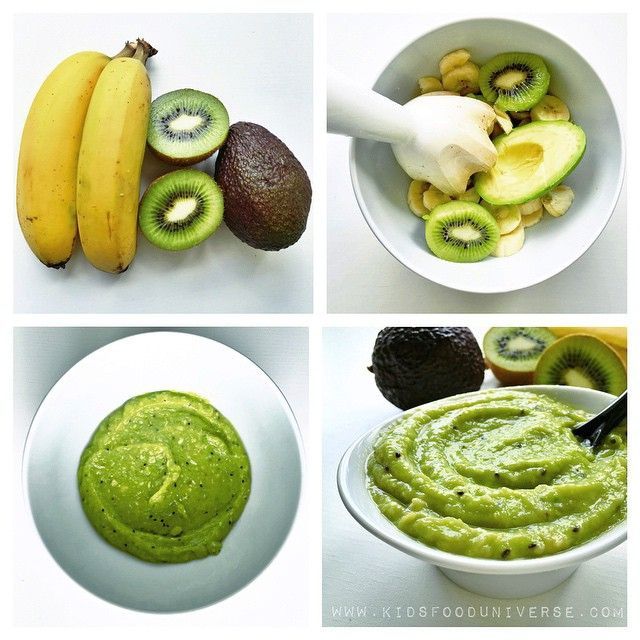 In the most severe cases, laryngeal edema and anaphylactic shock may develop.
In the most severe cases, laryngeal edema and anaphylactic shock may develop.
As Dr. Komarovsky emphasizes, kiwi increases the allergy to citrus fruits, therefore, before introducing it into complementary foods, an allergic child should definitely consult a doctor.
How many months can you start giving kiwi fruit to a child
Kiwi fruit is not recommended for babies under one year of age. At this age, the baby gets acquainted with fruits, vegetables and other products familiar to their region. For the first time, new tropical fruits can be given to a baby only after reaching the age of one, taking into account the basic rules:
- If a child has an allergic reaction to any food, it is recommended to postpone the introduction of kiwi into the diet until 3-5 years.
- For the first time, children are offered a minimum serving of peeled kiwi - no more than 5 g (half a teaspoon). An exotic fruit is best given between main meals.
- For the first acquaintance, you can offer the baby ripe fruit pulp, softened to a state of a homogeneous slurry.
 It can be crushed with a blender or a fork by adding a little warm water.
It can be crushed with a blender or a fork by adding a little warm water. - After the first feeding, carefully observe the reaction of the child's body. In the absence of any negative manifestations, the next serving of fruit can be increased to 10 g.
- Kiwi should be introduced into complementary foods separately from other new products. This will make it possible to track the reaction of the child's body to a tropical treat.
- Do not introduce new fruits into the menu if the child is sick, after vaccination and during the recovery period after illness.
- The maximum allowable fruit rate for a child under 3 years old should not exceed 30 g per day.
- Children over 5 years of age are allowed to consume the whole fruit. But this can be done no more than 2 times a week.
Vetch puree is given to children for the first feeding. To do this, wash the fruit thoroughly in hot water, then cut off the stem. Cut the fruit in half and scoop out the pulp with a teaspoon. Grind the fruit pulp through a sieve, while removing the seeds. After that, you can add a little warm water to the pulp and puree with a blender.
Grind the fruit pulp through a sieve, while removing the seeds. After that, you can add a little warm water to the pulp and puree with a blender.
By the age of three, children are given tropical fruit juice, puree or smoothie. After reaching the age of 5, the child can be treated with a whole fruit. Also, children over 5 years old can be offered kiwi as part of various desserts or salads, combining with other fruits or berries.
Basic selection rules
It is very important to choose only high-quality and fresh fruits for the children's menu. When choosing kiwi, you need to pay attention to several important points:
- Tropical fruits are best bought in a store or a large supermarket - this will allow you to purchase quality fruits that have been stored in the right conditions.
- Press lightly on the fruit before buying - if it is firm, it indicates that the flesh is not ripe and sour. The fruit should be soft, but not overly soft, as overripe fruits have a watery taste.

- Fruit should be moderately firm to the touch, without dents or spots.
- Ripe kiwi has a light and pleasant aroma, reminiscent of citrus.
- The skin of a quality and fresh fruit should be smooth and elastic, with a uniform color, without darkening. Do not buy fruits with dry, wrinkled or slightly damp skin.
- Press lightly with two fingers on the stalk area - if the juice is released, it is better not to buy such fruits.
Read on the topic Avocados for children: from what age can they be given and how?
Kiwi is an aromatic and healthy tropical fruit with a delicate, pleasant taste and a rich vitamin composition. Pediatricians are advised to include this fruit in the children's menu, because it fills the daily need for ascorbic acid. When properly introduced into complementary foods, taking into account the period and rules, the fruit will bring extraordinary benefits to the child's body and help diversify the diet with new, original tastes.










